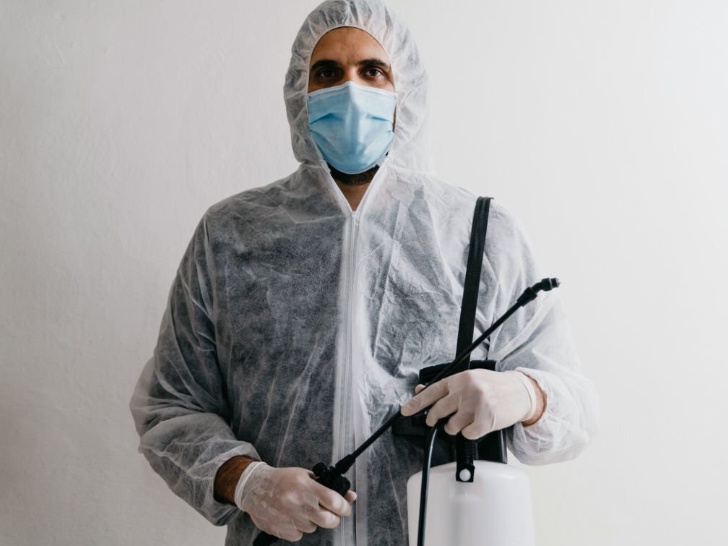As we become more conscious of our impact on the environment, the demand for eco-friendly solutions in all aspects of life is on the rise. Pest removal is no exception. Traditional pest control methods often rely on the use of harsh chemicals that can harm the environment, humans, and non-targeted organisms. However, the emergence of eco-friendly pest removal alternatives offers sustainable solutions for a greener future. In this blog, Pest Control Cranbourne South explore the rise of eco-friendly pest removal and its benefits in promoting a healthier environment and preserving biodiversity.
Understanding Eco-Friendly Pest Removal
Eco-friendly pest removal, also known as green pest control or sustainable pest management, aims to control and eliminate pests while minimizing harm to the environment and non-targeted organisms. It embraces the principles of integrated pest management (IPM) and emphasizes prevention, non-chemical interventions, and the use of environmentally-friendly products and practices.
Benefits of Eco-Friendly Pest Removal
Reduced Chemical Exposure
One of the primary advantages of eco-friendly pest removal is the reduction in chemical exposure. Traditional pest control methods often rely on synthetic pesticides, which can be toxic to humans, pets, and beneficial organisms. Eco-friendly alternatives utilize low-toxicity or non-toxic products, minimizing the risk of chemical exposure and promoting a safer living and working environment.
Preservation of Biodiversity
Eco-friendly pest removal strategies prioritize the preservation of biodiversity. Chemical pesticides can harm beneficial insects, birds, and other organisms that play a crucial role in maintaining ecological balance. By avoiding or minimizing the use of toxic chemicals, eco-friendly pest removal methods allow these beneficial organisms to thrive, contributing to a healthier and more diverse ecosystem.
Long-Term Effectiveness
While traditional pest control methods may provide immediate results, they often fail to address the underlying causes of infestations. Eco-friendly pest removal takes a holistic approach, focusing on prevention and long-term effectiveness. By identifying and addressing the root causes of pest problems, such as entry points or attractants, sustainable solutions offer more durable results, reducing the need for repeated treatments.
Sustainable and Greener Practices
Eco-friendly pest removal aligns with sustainable and greener practices. It promotes the responsible use of resources, minimizes waste, and reduces the carbon footprint associated with pest control activities. By adopting eco-friendly methods, individuals and businesses contribute to a greener future, demonstrating their commitment to environmental stewardship.
Eco-Friendly Pest Removal Techniques
Integrated Pest Management (IPM)
Integrated Pest Management (IPM) lies at the core of eco-friendly pest removal. It involves a systematic approach that combines various strategies to manage pests effectively. IPM integrates preventive measures, biological controls, cultural practices, and the targeted use of pesticides only when necessary. By prioritizing non-chemical interventions, IPM minimizes environmental impact while ensuring effective pest management.
Biological Controls
Biological controls utilize natural predators, parasites, or pathogens to control pest populations. Beneficial organisms, such as ladybugs, nematodes, or predatory mites, are introduced to target pests and reduce their numbers. This approach reduces the reliance on chemical pesticides, maintains ecological balance, and promotes long-term pest control.
Physical Barriers and Exclusion
Physical barriers and exclusion techniques form an essential part of eco-friendly pest removal. By sealing entry points, repairing cracks, or installing screens, pests are prevented from accessing indoor spaces. This approach minimizes the need for chemical interventions and provides a long-lasting solution for pest prevention.
Habitat Modification
Habitat modification involves altering the environment to make it less attractive to pests. This may include removing food sources, reducing moisture levels, or implementing proper waste management practices. By creating an inhospitable environment for pests, habitat modification contributes to long-term pest prevention without relying on chemical pesticides.
Education and Awareness
Education and awareness play a vital role in promoting eco-friendly pest removal. By educating individuals about the importance of sustainable pest management practices, the impact of chemical pesticides on the environment, and the availability of eco-friendly alternatives, we can foster a mindset shift towards greener pest control solutions.
Conclusion
The rise of eco-friendly pest removal signifies a shift towards more sustainable and environmentally-conscious pest control practices. By embracing non-toxic alternatives, preserving biodiversity, achieving long-term effectiveness, and promoting greener practices, we can create a healthier environment for ourselves and future generations. Through the adoption of integrated pest management techniques, biological controls, physical barriers, habitat modification, and increased education and awareness, we pave the way for a greener future in pest removal.


No comments yet